Crafts and Community in Roman and modern Northamptonshire
Pottery is probably not an industry you associate with Northamptonshire. However, back in April 2022, MOLA’s Senior Pottery Specialist, Dr Adam Sutton began an AHRC funded project to explore and share the skills and methods of Northamptonshire’s booming 1st-2nd century AD pottery industry. The results of the project will now be shared in an exhibition at the Chester House Estate, opening 17th December.
On this page you'll find information about the project, as well as x-rays of pots and 3D models - so you can try out Adam's research for yourself!
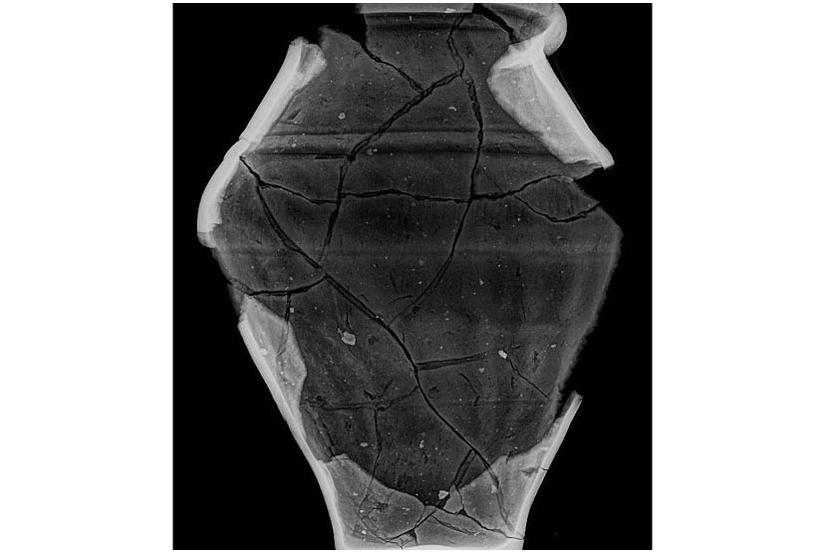
This pot, is a type called Northamptonshire-made Rushden ware, dates to the 1st century AD, not long after the Romans arrived in Britain. Use the 3D model to have a look all around the pot and then compare it to the x-ray!
The Pots
Roman families used a wide range of ceramics, so skilled potters were in demand! Exploring how local craftspeople made all the different types of pots will tell us a lot about the development of this important industry in Roman Northamptonshire, as well as how the potters shared skills within their communities.
AHRC funded digital x-ray equipment helped Adam see “through” a collection of Roman pots from the Northamptonshire Archaeological Resource Centre (ARC) and find out how they were made.
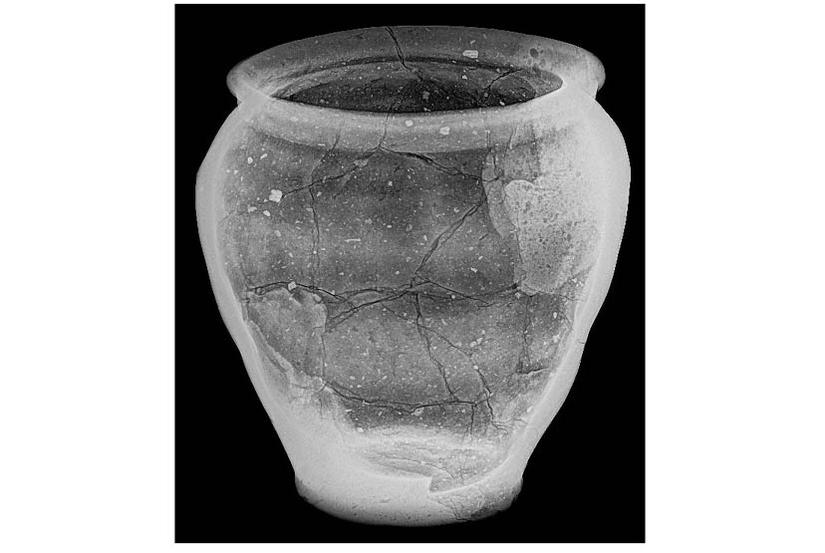
The results from the x-rays showed the Roman potters in Northamptonshire had two main ways of making pots, wheel-throwing and wheel-coiling. We think ancient potters may have chosen to use just one method, depending on what pots they were making:
Wheel-throwing
This is probably what you imagine when you think about making a pot. The potter uses their hands to shape a pot from a lump of clay turning on their wheel.
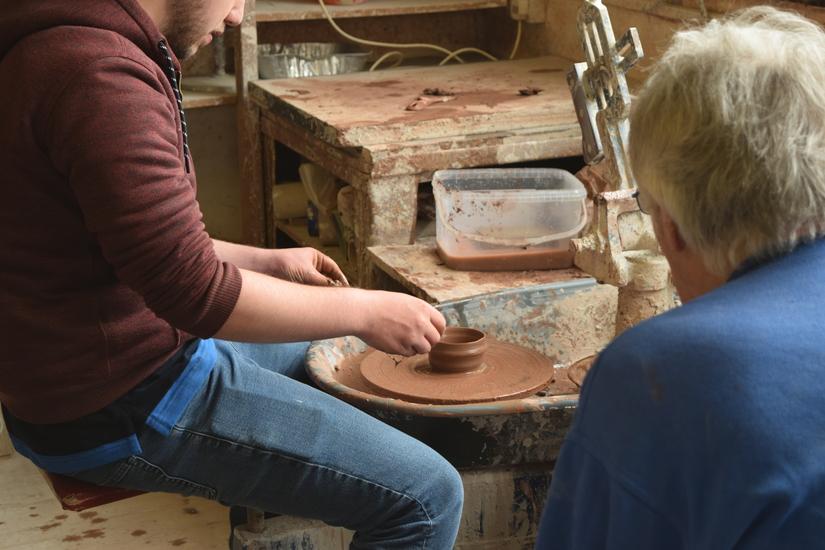
The potter’s wheel was not really used in Northamptonshire until the 1st century AD. But we can see from the x-rays that the craftspeople quickly started to use them.
From the x-rays, we now know the potters always used wheel-throwing to make “tablewares” (things like plates, bowls, and cups). Tablewares themselves were also quite new to Northamptonshire at this time, and they allowed people to serve food and drink in different ways, so they were really in demand!
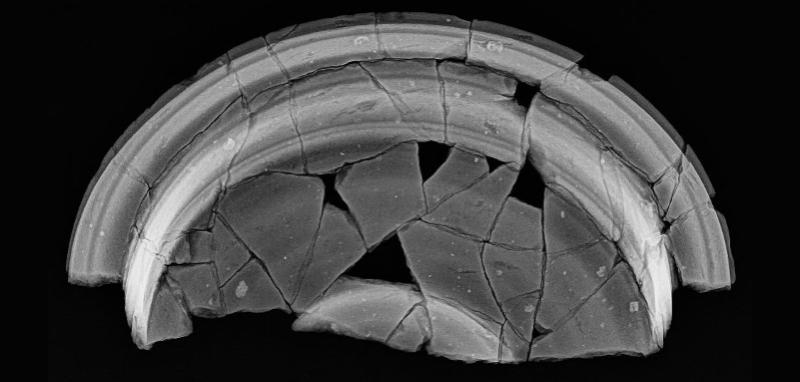
Like today, bowls were basic tablewares in which foods like soups and stews could be served at the dinner table. This half-complete bowl was found at the site of a Roman villa near the modern village of Easton Maudit, and dates to the 1st-2nd century AD
Roman cooking pot by MOLA on Sketchfab
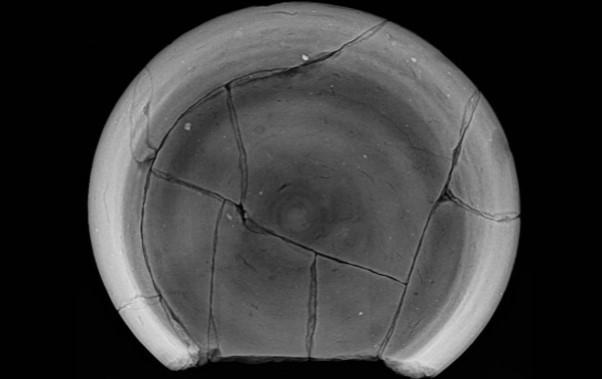
Dishes like this one were common features of Romano-British households. This one, dating to the 2nd or early 3rd century AD, was found at the site of a Roman villa near the modern village of Easton Maudit.
Roman dish by MOLA on Sketchfab
This Roman bowl and dish are both types of tablewear. Compare the x-rays and the 3D models. Are there things you can see in the x-ray but not in the 3D model? Or the other way around!
Wheel-coiling
The potter rolls out long snake-like “ropes” of clay. They stack the “ropes” in circles on top of each other and pinch them together to make a pot. The outside of the pot is smoothed out on the potter’s wheel.
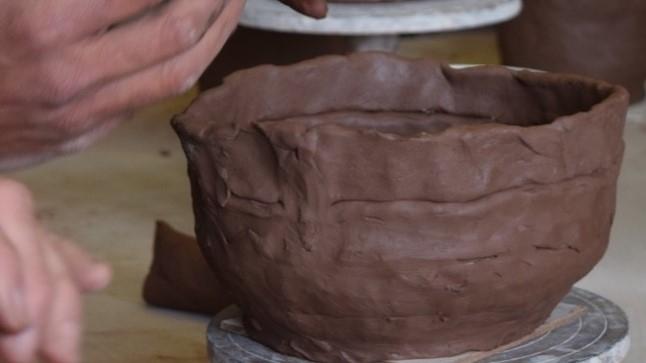
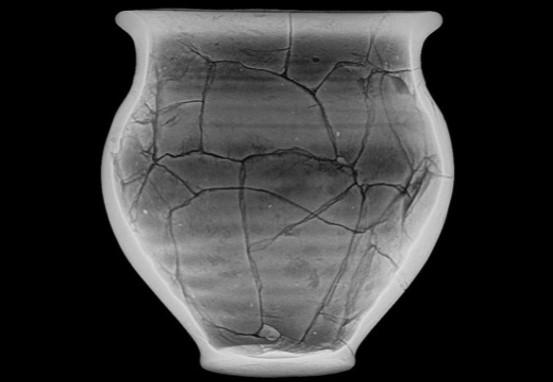
This Roman "necked" jar was found near Wellingborough. It was made locally and used for storage and cooking
Roman necked jar by MOLA on Sketchfab
Compare the x-ray to the 3D model – look at how much was hidden under the surface! Can you see the lines of the coils?
From the x-rays, we can see local people were testing out different ways of making wheel-coiled pots. Wheel-coiling was often used to make cooking and storage pots, but the x-rays also showed they were made with wheel-throwing. It seems basically the potter used whatever method they preferred!
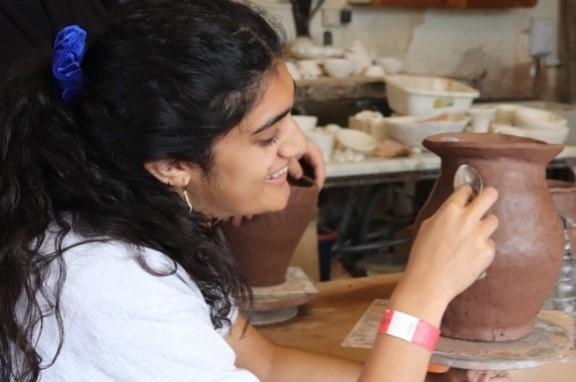
The Potters
Creativity and sharing skills for pottery making were key themes in the project, both in the Roman period and the present day. As well as exploring Roman pottery-making methods, Adam was joined by a group of local people keen to take on the challenge of testing them out!
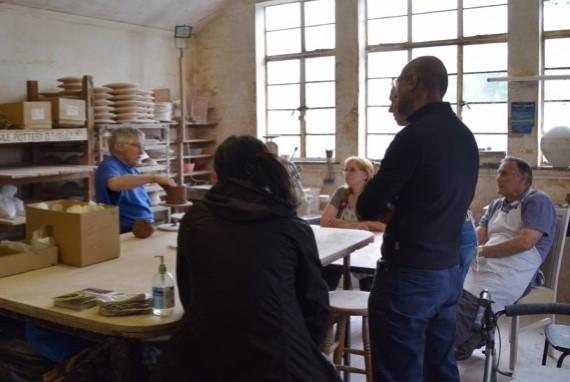
In a series of workshops run by Rob Bibby, master potter at Woodnewton Pottery near Oundle, they explored the full range of skills needed to be a potter in Roman Northamptonshire, from coiling to decorating.
Just like the Northamptonshire potters from almost 2000 years ago, the group, including students from colleges of the Creating Tomorrow Trust, quickly took on the Roman way of doing things. They developed new skills, learnt from each other, and built up a community of craftspeople.
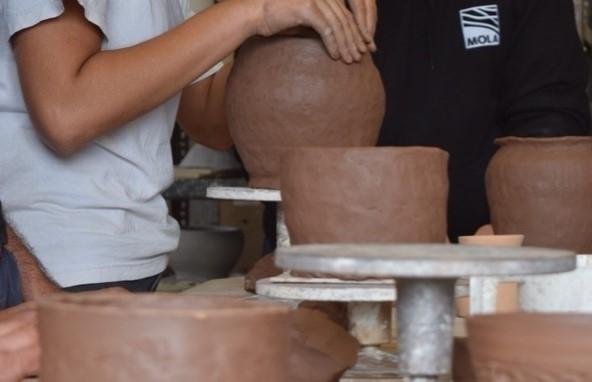
Master potter Rob also revealed that many modern potters still use the same methods of coiling and wheel-throwing. Although of course we now usually have electricity to turn the wheels!
The workshop participants were able to make lots of different types of pottery to test the techniques. Here’s what some of them had to say:
“I liked getting my hands dirty and trying something new. It was good learning how to shape my pot” - Charlie
“Having been on the pottery workshop days and made a pot that looks like its prehistoric, I marvel at the skill of the Roman potters to produce such beautiful items” - Paul
“Clay on the wheel has its own mind. Gentle nurturing it with my hands gave me a real sense of being calm and grounded. You could not rush with clay and that meant we had good conversations with everyone” - Rahul

The free exhibition about the project “Crafts and Community in Roman and modern Northamptonshire” will run from 17th December 2022 – 17th April 2023, 10am to 4pm, 7 days a week at Chester House Estate, with a family friendly event, where visitors can discuss the project with MOLA archaeologists, on the first day of the exhibition
Crafts and community in the past and present: engaging local communities with their Roman past using ceramic radiography has been funded by the Arts and Humanities Research Council. The project running throughout 2022, is led by MOLA’s Senior Pottery Specialist Dr Adam Sutton, in partnership with the Chester House Estate, Woodnewton Pottery, the Creating Tomorrow Multi-Academy Trust, and Cranfield University.